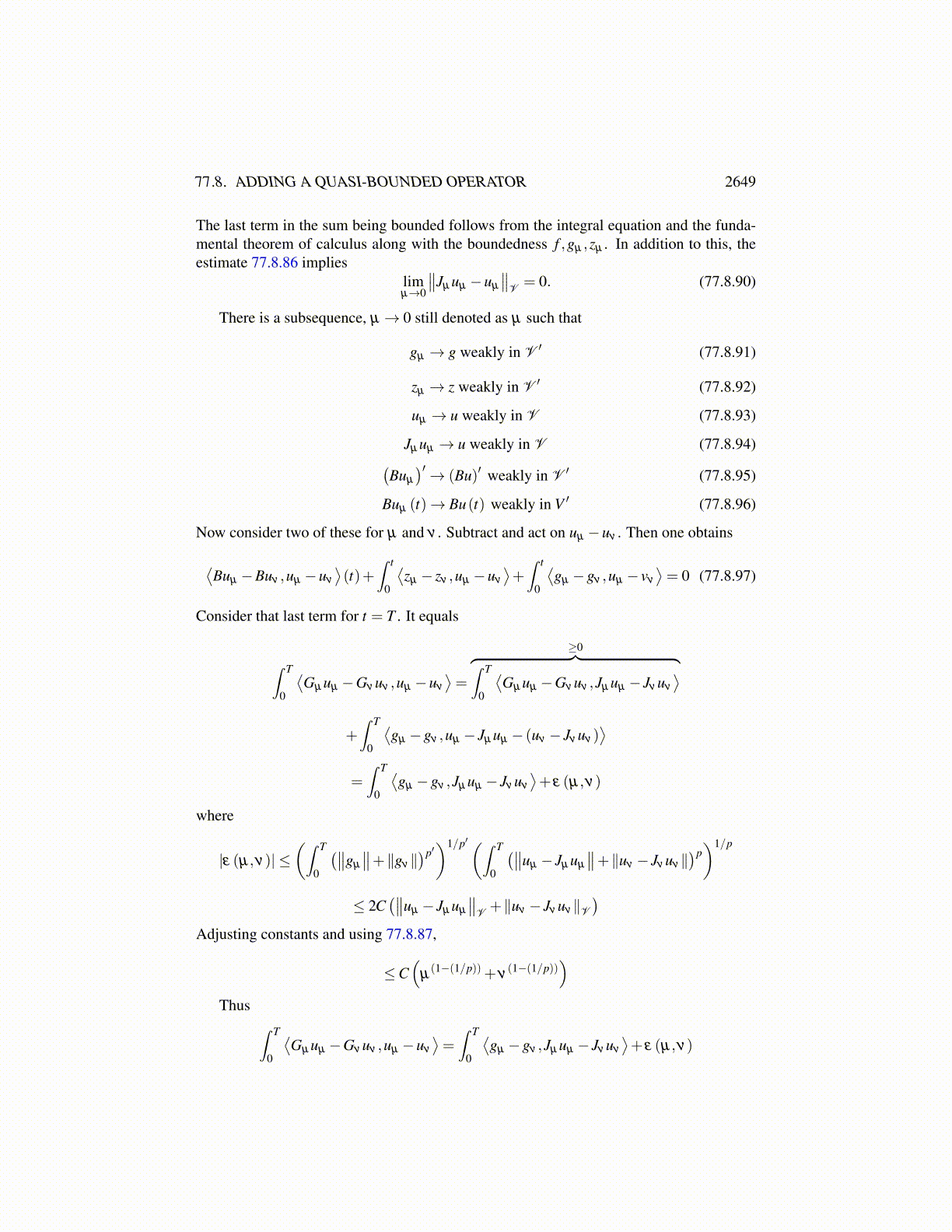
77.8. ADDING A QUASI-BOUNDED OPERATOR 2649
≤ 2p−2
µ p−1
((C∥u∥+C)p−1 +∥u∥p−1
)≤ 2p−2
µ p−1
(2p−2
(Cp−1 ∥u∥p−1 +Cp−1
)+∥u∥p−1
)≤ Cµ ∥u∥p−1 +Cµ
This is the case that p≥ 2. The case that p > 1 but p < 2 is easier. In this case,
1µ p−1
(∥∥uµ
∥∥+∥u∥)p−1 ≤ 1µ p−1
(∥∥uµ
∥∥p−1+∥u∥p−1
)A similar inequality holds. Thus the necessary growth condition is obtained for Gµ andconsequently, the necessary growth condition remains valid for Gµ +A. It was noted earlierthat the coercivity estimate continues to hold.
It follows that there exists a solution to the integral equation
Bu(t,ω)+∫ t
0z(s,ω)ds+
∫ t
0Gµ (u(s,ω))ds =
∫ t
0f (s,ω)ds+Bu0 (ω)
where z(·,ω) ∈ A(u(·,ω) ,ω) which has the measurability described above. That is, bothu and z are product measurable. Then acting on uX[0,t] and using the estimates valid for λ
large enough, one can get an estimate of the form
12⟨Bu,u⟩(t)− 1
2⟨Bu0,u0⟩+
∫ t
0∥u(s)∥p
V ds+∫ t
0
⟨Gµ u,u
⟩ds≤ λ
∫ t
0⟨Bu,u⟩ds+C ( f )
(77.8.82)Now Gµ is monotone and so,⟨
Gµ u,u⟩=⟨Gµ u−Gµ 0,u
⟩+⟨Gµ (0) ,u
⟩≥⟨Gµ (0) ,u
⟩≥−|G(0)|∥u∥
It follows easily from standard manipulations and 77.8.82 that ∥u∥V is bounded indepen-dent of µ . That is, there is a constant C independent of µ such that
∥u∥V ≤C (77.8.83)
The details follow. The above inequality 77.8.82 implies that by acting on uX[0,t],
12⟨Bu,u⟩(t)− 1
2⟨Bu0,u0⟩+
∫ t
0∥u(s)∥p
V ds−∫ t
0|G(0)|∥u∥V ds≤ λ
∫ t
0⟨Bu,u⟩ds+C ( f )
Then by Gronwall’s inequality and adjusting constants,
⟨Bu,u⟩(t)+∫ t
0∥u(s)∥p
V ds≤C (u0, f ,λ )+C (λ )∫ t
0|G(0)|∥u∥V ds (77.8.84)
so it is clear that there is an inequality of the form
supt∈[0,T ]
⟨Bu,u⟩(t)+∫ T
0∥u(s)∥p
V ds≤C (u0, f ,λ )